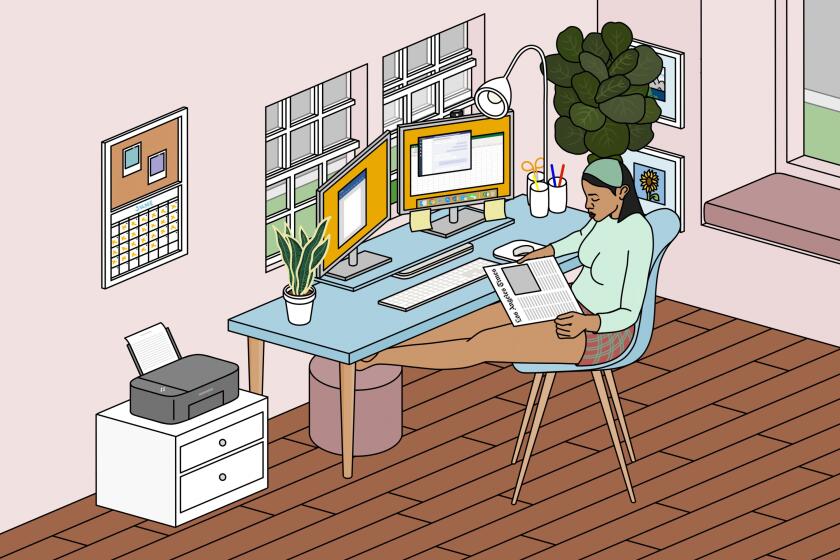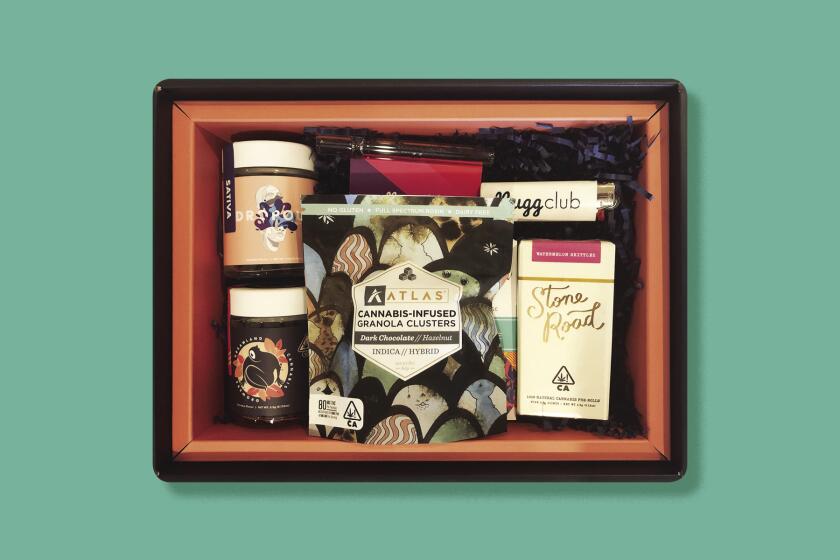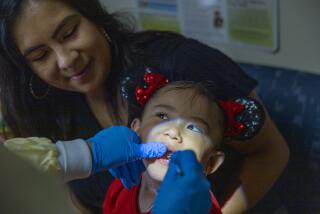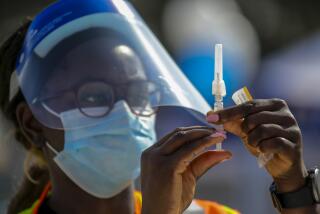Going to the dentist in the coronavirus era like I did? Here’s the drill
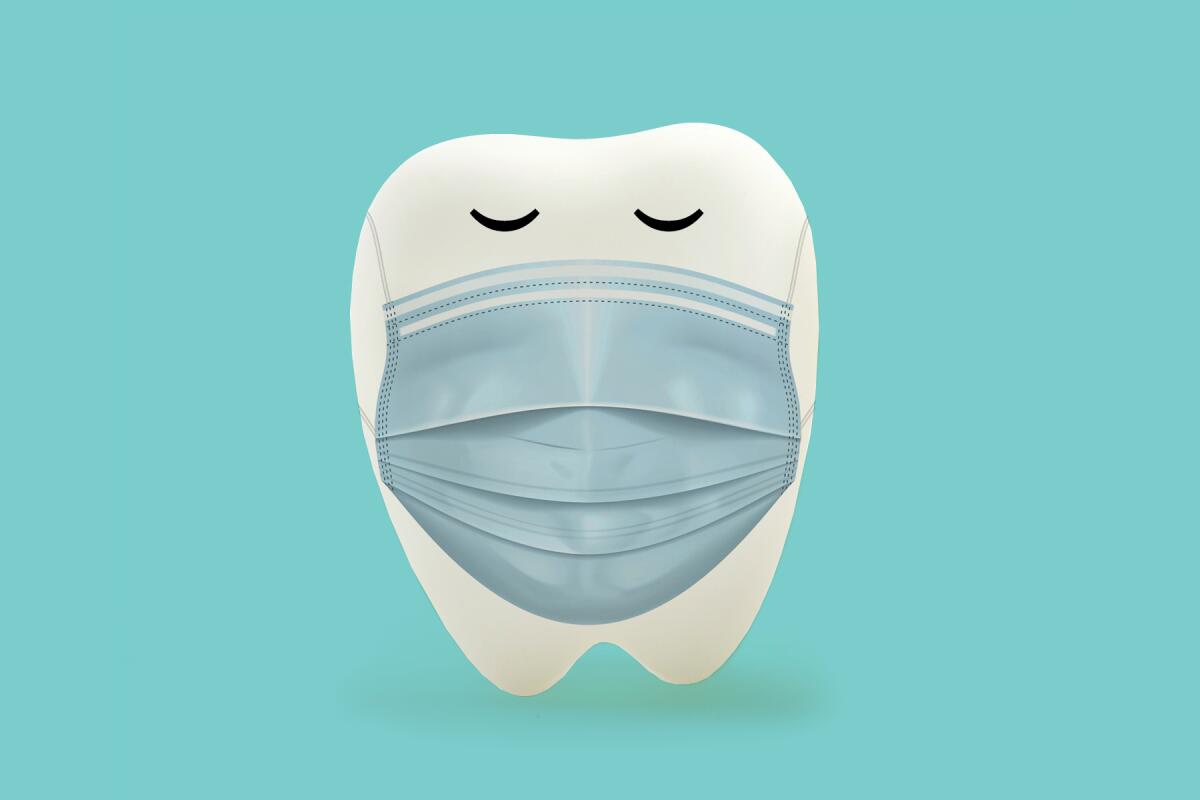
- Share via
Even if you’ve read about all the safety precautions dentists are taking to protect themselves and their patients in the new COVID-wary environment, you’re probably still more reluctant than usual to make a date with the chair. And you’re not alone. According to a June 15 survey by the American Dental Assn., patient volume is at 65% of pre-COVID levels (although that’s up markedly from the 38% of normal patient traffic reported in mid-May).
I, too, was in the “thanks-but-no” camp, having successfully shunted off, for nearly an entire calendar quarter, a long-scheduled dental cleaning. Then, in early June, barely two weeks after my dentist opened her practice back up for non-emergency procedures, a throbbing back left molar had me gritting my teeth, biting the bullet and opening wide. And guess what?
Although there were some procedural differences — and a whole lot of safety signage on display — it wasn’t markedly different than it had been before. Since no one needs the new fear of the unknown layered on top of the fear of the dentist’s office, I decided to make my (oral) pain be your gain and walk you through my experience.
Although your dentist’s protocols and procedures may vary a bit from those of mine (that would be Dr. Jamielynn Hanam-Jahr at Beverly Hills Aesthetic Dentistry), at a minimum any dentist you go to should be following the Los Angeles County Dept. of Public Health’s guidelines for Resuming Deferred and Preventive Dental Care in L.A. County. (If they’re not, it’s time for a new dentist.)
What is it like to get a health exam during the COVID-19 pandemic? It is different, but safe and vitally needed, given how many people are avoiding preventative care out of coronavirus fears.
It took (just a little) longer
The amount of time I sat in the dental chair didn’t change much, but you should expect the entire visit to lengthen by as much as half an hour. That’s how much additional time Hanam-Jahr has tacked on to routine hygiene appointments.
That allows time for a patient temperature check (you need to clock in under 100.4 degrees Fahrenheit or 38 degrees C) and a 13-question pre-screening questionnaire (which is also filled out daily by the office staff) that includes questions about current health (Do you currently have a cough? Do you currently have a sore throat?) and recent behavior (Have you traveled farther than 100 miles in the last 14 days?).
An extra minute in the hygienist’s chair is dedicated to a pre-procedural mouth rinse (two rounds of 30-second swishing) with a a hydrogen peroxide-based rinse called Peroxyl (“It helps kill the coronavirus if it’s in your mouth or your saliva,” Hanam-Jahr explained).
And, after an appointment, there is added time built in to cleaning and disinfecting the room as well as swapping out plastic barriers (think plastic covers on computer keyboards and the like) before the next patient arrives.
How to push back when you’re not sure your office is ready to reopen, even with social distancing. Plus: How to ask to work from home forever.
“We’ve always wiped all these things down,” my dentist said. “But now we’re replacing the barriers as well as wiping things down, and that takes a little bit more time.”
There weren’t quite as many people
That extra between-patient, room-cleaning time is just one of the reasons your dentist’s office is going to have a lot fewer folks in it when you next darken the doorstep. Last time I was in my dentist’s waiting room, it was a beehive of activity. This time it was just me and a single worker bee (Nancy the receptionist). Before shutting down in mid-March, each of the two hygienists in Hanam-Jahr’s practice were seeing eight patients per day.
“Now, they see five patients a day in order to take time for all the cleaning,” she said. “Plus, I don’t want a crowded office so we’re staggering [appointment times]. That means up to six fewer patients a day and operating overall at about 60% of normal.”
That open-but-nowhere-near-as-busy part tracks with what’s happening in the majority of dentists’ offices across the country, said California Dental Assn. president and Santa Barbara periodontist Richard Nagy. “As of the June 15th [American Dental Assn.] survey, about 34% of dentists across the country are back to normal,” Nagy said, “while 63% are open but seeing a lower patient volume than normal.” (By comparison, in the third week of April, 79% of dentists were closed but for emergency procedures and nearly 19% were totally closed.)
There were definitely a lot more layers
The most visible difference was the additional personal protective equipment (PPE) worn by everyone involved at the dentist’s office. For Nancy the receptionist, who took my temperature and checked me in, that meant disposable gloves and a face mask. For my dental hygienist that meant a long-sleeved isolation gown that covered her from neck to just below the knee, disposable gloves and a plastic face shield worn over an N95 respirator mask.
“The N95 protects [the hygienist] from aerosol spray,” Hanam-Jahr explained. “But it doesn’t protect [them] from splatter moisture, so [that’s why] they have to wear full face shields with it.”
And then there was that weird tool in my mouth
Because aerosol spray — a suspension of fine liquid droplets in the air — can easily transmit the coronavirus, dentists and dental hygienists are striving to keep aerosol-generating procedures to a minimum. That meant the go-to teeth-cleaning implement known as the ultrasonic scaler (that vibrating tool that feels like a tuning fork in your mouth) was shelved during my cleaning in favor of low-tech hand-scaling, which generated far less spray.
Also, because the most careful teeth cleaning will generate some level of aerosol spray, many offices have taken additional steps to dispatch airborne particles quickly and efficiently. Some have installed high-tech HEPA air filters while others have opted for the low-tech alternative, placing a high-powered fan in front of an open window to suck the air out of the room.
Nugg Club’s cheeky branding and novel product mix add a dash of retro fun to scoring cannabis.
There’s also a specialized tool that some dentists (including mine) have turned to more often during the pandemic: a high-powered suction system attached to a plastic mouthpiece called the Isolite. During a routine cleaning, the Isolite is placed first on one side of the mouth and then moved to the other, each time wedged against the back teeth. It simultaneously holds the tongue in the back of the mouth and the mouth open (and brightly lit) while whisking all manner of dental detritus out of the way and down a suction tube.
Hanam-Jahr estimates that the Isolite gadget catches around 95% of all the aerosol generated during a dental procedure before it can make its way out of the mouth and into the room.
She notes that dispatching errant — and potentially deadly — aerosol spray isn’t new to the dentistry profession. “We’ve always had [protocols],” she said. “Because we know we produce aerosols. We spray. We splatter. We already have guidelines in place. ... I feel like there’s no other profession better prepared to handle COVID than dentists.”
The California Dental Assn.’s Nagy concurs with that assessment, adding that, in the effort to get the dental industry back to its pre-COVID level of business, getting patients who are fearful of catching the virus to feel safe returning to their dentist’s office is the second biggest challenge. The first is an adequate supply of personal protection equipment.
“There is still an issue worldwide getting the appropriate PPE,” Nagy said, “and that’s really our biggest challenge of all.”
Get The Wild newsletter.
The essential weekly guide to enjoying the outdoors in Southern California. Insider tips on the best of our beaches, trails, parks, deserts, forests and mountains.
You may occasionally receive promotional content from the Los Angeles Times.
More to Read
Sign up for The Wild
We’ll help you find the best places to hike, bike and run, as well as the perfect silent spots for meditation and yoga.
You may occasionally receive promotional content from the Los Angeles Times.


